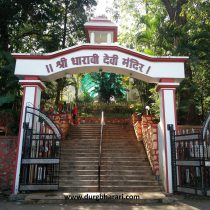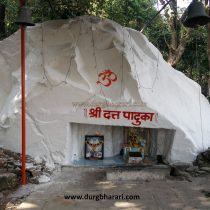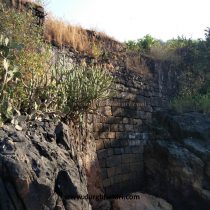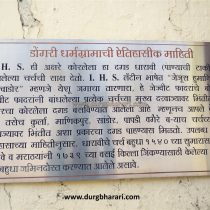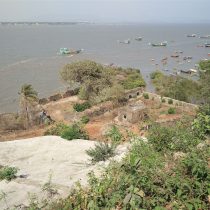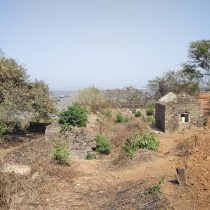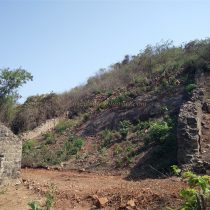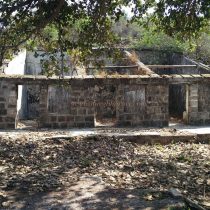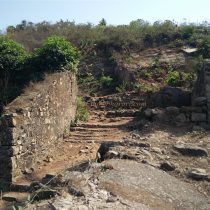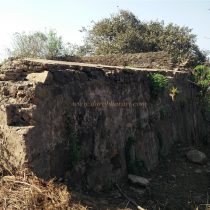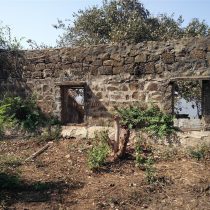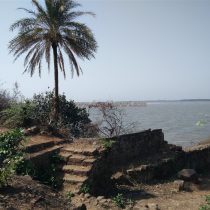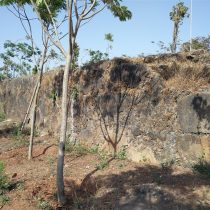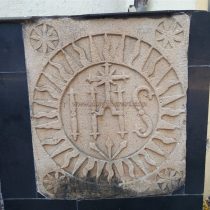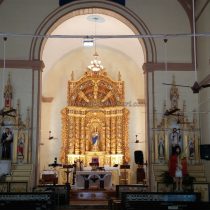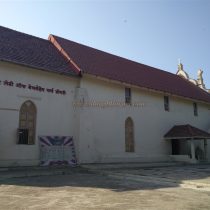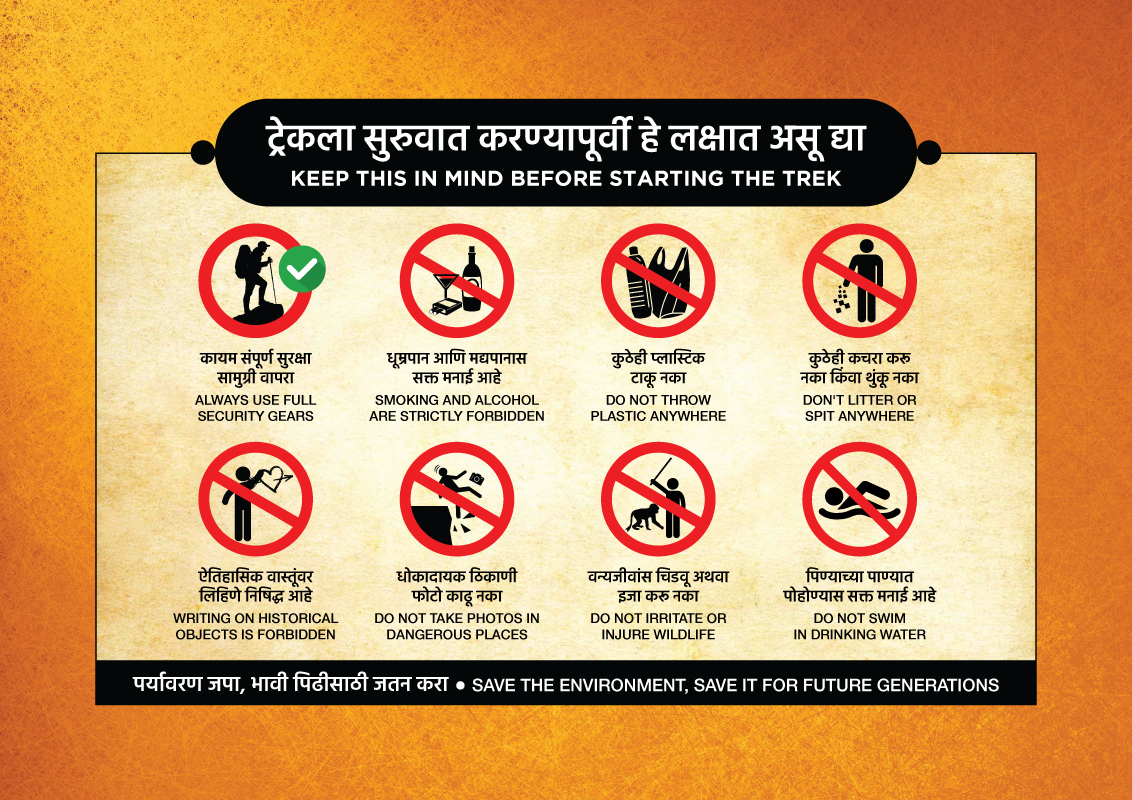DHARAVI
TYPE : COASTAL FORT
DISTRICT : THANE
HEIGHT : 0
GRADE : EASY
Dharavi fort which blocks the coastal entrance of the Vasai fort is located near Bhaynder. The shape of the fort is narrow like Korlaigad from the chowk, a place on the head of the fort till the water bastion in the bottom. You can get off at Bhayander station of Western Railway and take a bus to Uttan to reach Dharavi fort. This fort, which has been struggling ever since its construction due to constant fights taking place, today only the remnants of the fort remains. To see the rest of the fort, take the Bhayander-Uttan bus to Dharavi Devi temple. Nearby is the Portuguese-era Belan Mauli Church. After seeing that, we reach the temple of Goddess Dharavi. On the way to the front of the temple, one can see a place where Dattapaduka is carved in stone in recent times.
...
From here we walk for about 15 minutes to reach a Dargah. Here, on the left-hand side, you can see a hill. From 1536 to 1600, the Portuguese removed the stone from this hill and built the fort of Vasai and the church of Goa. After seeing this, a road goes up to the top of the hill. Down on the right side of the road, towards the sea, you can see the only bastion built of wrought stone. The remains of the fort are widely scattered in this area. It is not just a bastion but also the ramparts of the fort are adjacent to it near the sea and one of the ramparts of these bastions goes up the hill. On this sea, bastions are the remains of the Portuguese office and many other things. All these remains are hidden in the bushes and under the soil. When you come to the top of the fort, you will see a garden. Some remnants of the ramparts can be seen in this garden. From the top of the fort, you can see the Arabian Sea to the west, Vasai fort to the north, and Vasai creek in the middle. From this place, the geographical location of the fort and the importance of the Vasai expedition can be seen. For this, you should visit this part at least once. 1 hour is enough to see the entire fort. Dharavi fort played an important role in Chimaji Appa's Vasai campaign. The battle of Vasai between the Marathas and the Portuguese in 1737 brought importance to the island of Dharavi. Dharavi fort is in front of Vasai fort. Due to the creek of Vasai on one side and the Arabian Sea on the other side, the location of the Dharavi fort was very important in the Vasai campaign. From this fort, it was possible to cut off the supplies of the Portuguese of Vasai by sea and creek. Also, the height of the Dharavi fort makes it easy to keep an eye on Vasai fort. Shankaraji Pant, while explaining the importance of Dharavi to the Peshwas, writes that Dharavi is just like Janjira fort due to its proximity to the sea and port. He also said that the Dharavi fort and Vasai fort are very close to each other. On 12th April 1737, the Marathas attacked Dharavi Island and immediately started building Dharavi fort. For this, there is a letter written by Shankarji Keshav to Chimaji Appa asking 2200 people to build a fort at a labor cost of Rs. 5 / - per day. The Portuguese immediately heard the news of the construction of a fort by the Marathas and recognizing the next danger, the Portuguese sent 800 soldiers with an officer named Kaddin and attacked and captured Dharavi Island and conquered the partially built fort and completed the construction of the fort. For Vasai fort, the Marathas had to conquer Dharavi fort. On 30th November 1737, the Marathas conquered Dharavi fort with the help of 4000 soldiers and 100 cavalries. The Portuguese recaptured the fort of Dharavi on 28 February 1738. Chimaji Appa made a failed attempt to capture the fort on March 9, 1738. Due to this defeat, the conflict between the Marathas and the Portuguese continued throughout the year. Finally, on March 6, 1739, the Marathas recaptured the fort of Dharavi. In 1818, the fort passed to the British.
© Suresh Nimbalkar

